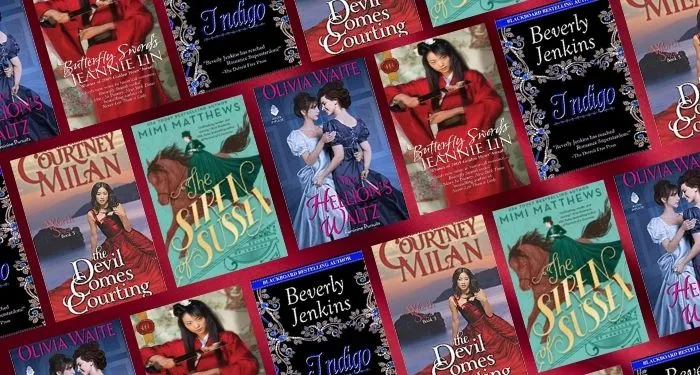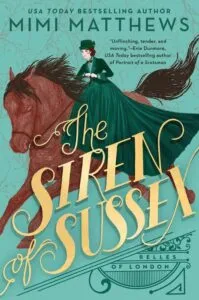
Sew What? Fashion History in Historical Romance
The role of fashion history in historical romance is an ongoing topic of conversation. Every stitch has a story, especially before the electric sewing machine or ready-to-wear fashion was widely available. Production was slow, personalized, and expensive. So it is no surprise historically based fashion has become an important element in historical romance novels. Fashion History is broadly defined as the object-study of clothing and its development through time and across regions. Historians use extant garments, sewing guides, textiles, and patterns to understand clothing design. Additionally, scholars also examine paintings, photographs, literature, and news articles for supplemental information.
I am of the opinion that historically based elements of historical romance will always be exciting. However, we shouldn’t forget the discussion around proving accuracy via the author’s note in Vanessa Riley‘s recent piece. Broad debates on historically accurate versus historically based writing in historical romances is not a new discussion. A historical doesn’t have to be historically based for me to enjoy reading it. Does the use of fashion history in clothing descriptions bring me joy? Yes. Can we have specific conversations about the role of fashion history in historical romance generously? I also think the answer is yes. In historical romances, every layer of clothing can play an important role in building character and developing the setting. So why not have fun with fashion history?
Every Stitch Has a Story
Romance writers manipulate historically based fashion successfully. I adored Amelia Smith’s bamboo cage bustle with an interior fan in The Devil Comes a Courting by Courtney Milan. The failure of the device makes for an adorable meet-cute, and the invention quickly establishes her character. Because Milan understands 1870s fashion history, she can create an item of clothing that could have existed at the time.
Oftentimes, historical romance writers with an expert-level understanding of clothing use details of dress to build character. In Indigo by Beverly Jenkins, Hester Wyatt has escaped enslavement and is now a part of the 1858 Underground railroad. She is also a part of the Free Produce Movement. Hester’s clothing reflects the fact that she boycotts products of slave labor. Her love interest, Galen Vachon, shows he cares by ensuring the finer clothing in her new wardrobe follows the Free Produce Movement. Of course, Beverly Jenkins is known for bringing life to a realistic portrayal of African American History in romance. Her use of fashion history is just one component of a larger picture.
Because clothing can communicate position, writers also use fashion to disguise characters. I would love to highlight the depiction of Tang Dynasty clothing and disguise in Butterfly Swords by Jeannie Lin. Ai Li wears a red silk wedding dress appropriate for the setting 758 CE in China complete with heavy jewels and a hundred li of embroidery thread. Escaping her wedding, she leaves that clothing behind and dons a new set of grey masculine clothing. The continued divide between western and eastern clothing changes her interaction with the characters in the book. For some additional reading, Empire of style: Silk and Fashion in Tang China by Buyun Chen illuminates the materials and patterns described in the novel.
A New Wave of Fashion Historians
As an aside, NotYourMommasHistory has also done impressive work with African American Historical dress on YouTube. Online creators looking to make fashion history accessible like Bernadette Banner show fashion history. Online resources like An Historian About Town and The Fashion History Dictionary also provide online exhibitions that are publicly available. That is to say, the public availability of fashion history has expanded writers’ ability to understand clothing by time period, region, and personal choice.
Previously, in-person museum exhibitions like The Met’s The Costume Institute, The V&A, The Fashion Museum Bath, The Kyoto Costume Institute, and The Fashion History Museum were wonderful in-person examples of fashion history; however, they remained limited in their reach. Although some exhibits and museums are free to the public, they still require patrons to physically visit their locations. Historically based clothing has always been a part of historical romance, however, a writer’s ability to access the information at all times for a low cost has not.
Fashion History in Historical Romance: A Focus on Europe
When it comes to specific details in specific time periods, historical romance writers love Eurocentric historicals. From Medieval to Regency to Victorian clothing, writers have fashion history locked down. While many writers start with a love for a time period and place, Eurocentric historical romances are highly popular amongst readers. This also means the books might sell better to publishers who are willing to put more into the development and production of those books. While some great lists explore other historical romances, I will now turn to the use of fashion history in a time span of Eurocentric historicals.
We can look at detailed clothing in Medieval romances (roughly the 5th to 15th centuries). K.L. Noone’s Bisclavret is a queer reimagining of Marie De France’s Breton Lai of the same name. In both, Bisclavret is a werewolf whose clothing allows him to shift back into a man. His wife steals his clothing, and he is stuck as a wolf by the king’s side until they are returned to him. The linen, silk, and leather clothing define him as a Breton knight of the time period. Due to the Medieval reuse of fabrics from old garments, much of western medieval fashion history comes from a combination of stories like Bisclavret and paintings. A Cultural History of Dress and Fashion in the Medieval Age by Sarah-Grace Heller further explores the history of Medieval fabrics and fashion.
Raise Your Waistlines, We’re Talking Regency Fashion
We’re getting to a much bigger piece of the proverbial pie, English regency (1795 to 1837). I’m just going to pull the regency menswear in The Queer Principles of Kit Webb by Cat Sebastian. Percy uses class-based regency menswear to disguise his movements through London in The Queer Principles of Kit Webb. Head to toe, Percy typically presents as a young aristocrat with the hair, makeup (complete with a heart-shaped beauty patch), and shoes to match his position as a young lord. So, when he walks into Kit’s coffeehouse in working-class garments, he is unrecognizable. Even dressing with or without a servant’s help is presented as a potential problem throughout the romance.
Visually presenting wealth through clothing also creates businesses around demand. Olivia Waite explores the business-based debates in the regency period in The Hellion’s Waltz. Maddie is a talented silk-weaver whose work has been stolen. The con at the center of the story revolves around her clear talent, design theft, and a weavers union looking to create a more equitable job market. Alongside fashion history that focuses on the way people wear garments, lies a record of production that is equally important. Historical romances, in any time period, continue to explore clothing manufacturing and the people behind flawless fashion.
Dressing For Success, But In A Victorian Way
Now, let’s move on to a wonderfully in-depth exploration of victorian historical fashion (1837 to 1901). The Siren of Sussex by Mimi Matthews is set in 1862, and boy is it a masterclass in using fashion history to build character. Ahmad Malik is a half-Indian tailor in victorian London looking to break into womenswear and open his own modiste. His designs are wonderfully practical, innovative, and flattering, but when he adds pockets to his new muse’s dress, she breaks into tears. She didn’t even have to ask for pockets, he just knew she would love them.
Personally, I will always appreciate pocket details in historical romance. Barbara Burman and Ariane Fennetaux’s beautifully detailed book The Pocket: A Hidden History of Women’s Lives, 1660–1900 developed from the extensive study of both pocket use and creation. Due to the immense detail in the book, there are so many fun and exciting chapters that explore the way women have created private spaces on their person through pockets over time.
Threading It All Together: Fashion History in Historical Romance
Now, there could be an exhaustive list of historical romances and their excellent use of fashion history, however, I merely aimed to continue the discussion. Ultimately, the work done in fashion history continues to be a rich resource for romance historical writers looking to add a bit of historically based clothing to their character’s wardrobes. Whether a character is involved in the production of fabrics or fashion or merely dressed appropriately in a historical romance; fashion history plays a role in developing character.
I do not need a one-for-one recreation of historical garments, nor am I looking for the frankly mythical concept of historical accuracy. Instead, I enjoy the process of picking up bits of fashion history in my reading life. I like learning more about the characters because of it. There will always be something about clothing in books that draws my eye, and I will happily follow the thread of fashion history authors sew into their historical romance novels.














